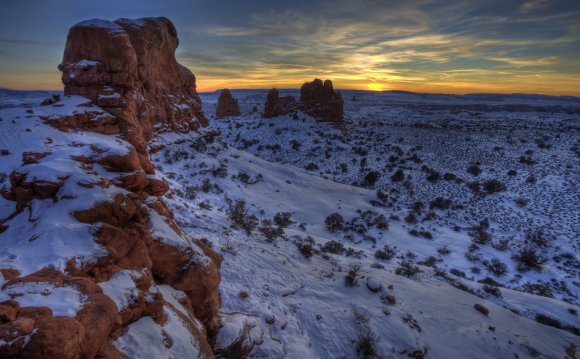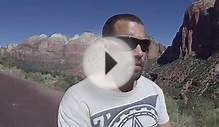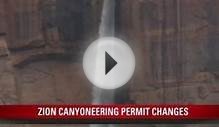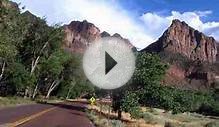
Visitation to Zion National Park peaks in the summer months. Due to the areas lower temperatures, visitation is lower during the winter which makes it a great time to visit and enjoy the solitude the park offers.
Location
- Southwest Utah, on the edge of the Colorado Plateau.
- Address: Zion National Park, Springdale, UT 84767
- Telephone: 435-772-3256. This line offers 24-hour recorded information.
Operating Hours
During summer months, the visitor centers are open daily from 8:00 a.m. to 7:00 p.m. Spring, fall and winter hours are shortened. Some visitor centers are closed on some federal holidays. Call our 24 hour number for current updates at 435-772-3256.
Climate
Be prepared for a wide range of weather conditions. Temperatures vary with changes in elevation and seasons. Day/night temperatures may differ by over 30 degrees Fahrenheit. Spring weather is very unpredictable. Stormy, wet days are common, but warm, sunny weather may occur too. Precipitation peaks in March and September. Spring wildflowers bloom from April through June, peaking in May. Summer days are hot (95-100 degrees F.), but overnight lows are usually comfortable (65-70 degrees F.) Afternoon thunderstorms are common from mid-July through mid-September. Storms may produce waterfalls as well as flash floods. Fall days are usually clear and mild; nights are often cool. Autumn color displays begin in September in the high country, and in Zion Canyon in early November. Winters in Zion Canyon are fairly mild. Winter storms bring rain or light snow to Zion Canyon, but heavier snow to the higher elevations. Clear days may become quite warm, reaching 60 degrees F.; nights are often in the 20s and 30s. Winter storms can last several days and cause roads to be icy, especially on the east side of Zion. Zion roads are plowed, except the Kolob Terrace Road, which is closed in winter. Be prepared for winter driving conditions from November through March.
Park Profile
Established 1909 as Mukuntuweap National Monument; expanded in 1919 as Zion National Park. Significance Established to preserve and protect the scenic beauty, unique geologic features, and unusual assemblage of plants and animals. Size 229 square miles.
Elevation
Lowest – 3, 666 ft (1, 128m) Coalpits Wash in the southwest corner. Highest – 8, 726 ft (2, 660 m), Horse Ranch Mountain in the Kolob Canyons section. Precipitation Annual Average; 15 inches. Name Zion, a Hebrew word referring to a place of safety or refuge, given to this canyon by Mormon pioneers in the 1860s. Geology Sedimentary rock, mostly sandstone. Some limestone, shale, mudstone and conglomerate. Mostly Triassic through Jurassic (250 million to 150 million years ago). Some recent volcanic activity in the form of cinder cones and lava flows. Plant Life Richest diversity of plants in Utah–almost 800 native species. Differences in elevation, sunlight, water, and temperature create “microenvironments”, like hanging gardens, forested side canyons, and isolated mesas that lend to this diversity. Animal Life 75 species of mammals, 271 birds, 32 reptiles and amphibians, 8 fish. Commonly seen animals include mule deer, rock squirrels, lizards, and many species of songbirds. Rare or endangered species include Peregrine Falcons, Mexican Spotted Owls, spinedace (a fish), and some species, like the Zion snail, found nowhere else on earth. Human History Evidence of Ancestral Puebloans, formerly known as the Anasazi, date from about 2, 000 years ago; Paiutes from about 800 years ago. Mormon settlers arrived in the 1860s. Park Visitation in 1920 was 3, 692; in 1996 it reached 2.6 million.
Directions
The Visitor Center at the Kolob Canyons entrance is accessible via Exit 40 from I-15. I-15 passes west of the Park and connects with UT-9 and 17 to the Park. US-89 passes east and connects with UT-9 to the Park. The Zion Canyon Visitor Center is a short distance from the Park’s South Entrance adjacent to Springdale. The closest airport is in St. George, UT, 46 miles (74.1 km).
RELATED VIDEO











